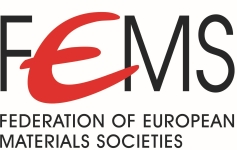The FEMS Lecturers 2014-2015
Christian Greiner
Karlsruhe Institute of Technology, Institute for Applied Materials, Kaiserstrasse 12, Karlsruhe, Germany

Dr. Christian Greiner is awarded the FEMS lectureship 2014 for his pioneering work in the field of contact mechanics and tribology. Analyzing the contact splitting phenomenon in gecko toe pads, he formulated adhesion design maps and developed bio-inspired fibrillar adhesives. He now works on the role of structural changes for nanoscale friction, and on water condensation in frictional contacts.
Materials Tribology: An emerging field in materials science
The science of interacting surfaces in relative motion (tribology) is of key importance in all systems containing moving parts. Friction, wear and the associated energy dissipation are major challenges from nanoelectromechanical systems, over hip prosthesis to offshore wind turbines and the deployment of satellites. In recent years, it has become evident that the tribological properties of a material, like friction coefficient and wear rate, strongly depend on the evolution of a nanocrystalline surface layer during the very beginning of a tribological system’s lifetime. The materials science-based mechanistic understanding of this microstructure evolution under tribological loading is still poor. Consequently, this is the research topic that my group is concentrated on.
In my contribution, I will focus on a reciprocating motion and on model materials like oxygen-free high-purity copper in contact with a sapphire ball. One of the parameters we systematically varied was the sliding distance. I will present how an annealed microstructure is transformed into the above-mentioned nanocrystalline surface layer with increasing sliding distance. We follow this evolution with scanning electron and focused ion beam microscopy, accompanied by transmission electron microscopy and (3D)EBSD. One of the goals of this study is the formulation of a model description of the microstructural changes based on energetic and mechanistic considerations in order to understand these changes and their influence on tribological properties. This might allow for materials with tailored ultrafine microstructures, combining low friction forces and very small wear rates.
Henry Proudhon
Centre des Matériaux, Mines ParisTech, CNRS UMR 7633, Evry France

Henry Proudhon’s research addresses extremely challenging problems in materials science, such as short cracks propagation (fatigue), plasticity in polycrystalline materials and solid damage at contacts (fretting).
His original approach associates computer modelling in mechanics (multiscale mechanical behaviour…) and physics (coherent diffraction…) with experimental developments, e.g. in ESRF, and brings direct insight from the material microstructure to the mechanical properties.
Deformation and cracking of structural materials: from synchrotron X-ray investigations to computational mechanics
The drive for innovation pushes forward better performances of structural materials subjected to severe service loads (eg. superalloys in turbine blades, steel rail/wheel contact, fatigue of aerospace Al alloys...). More than ever, understanding the deep nature of plastic deformation and fatigue fracture of such materials appears as extremely important.
Third generation synchrotrons (and free electron lasers in the future) are developing through Europe to help scientists to investigate material problems, allowing unprecedented in situ experiments. Damage can be seen non destructively in three dimensions with a submicronic spatial resolution, stress probed by diffraction while the microstructure of the material can now also be fully determined.
In the mean time, plasticity and fatigue fracture remain passionate topics to study and model, with much to discover. Conducting key experiments to serve as input to computational mechanics calculation (for instance by finite elements using crystal plasticity) is a promising way forward. Calculating real microstructures and real crack geometries from tomographic images lead to very large scale calculations only possible with the advent of parallel and grid computing.
Several studies adopting this philosophy will be presented including fatigue cracking of a titanium alloy which led to a new model for crack propagation in crystalline materials. An outlook about recent progress in the nanoscale where the challenges are numerous (European network GDRi Mecano), will be presented.

